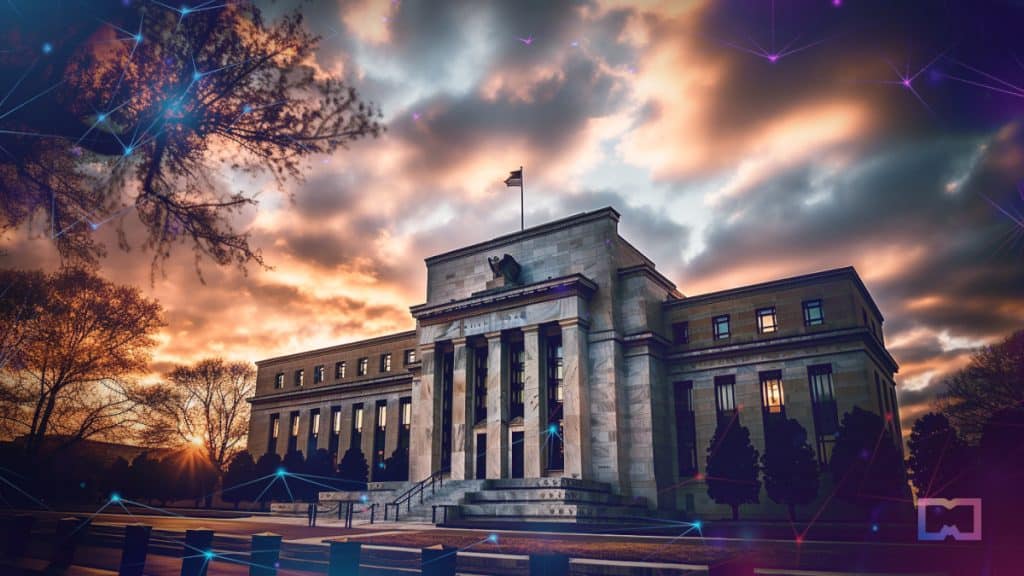U.S. Fed Vice Chair Barr Warns of Risks Associated with Non-Federally Regulated Stablecoins


In Brief
The Fed says it is actively researching CBDCs, focusing on system architecture and tokenization models.
However, no decision on issuing a CBDC has been made, and any such decision would require support from the executive branch and Congress.
Barr emphasized the importance of strong federal oversight for stablecoins.

Today, Michael S. Barr, the Federal Reserve’s Vice Chair for Supervision, delivered a speech about the Fed’s role in supporting emerging payments systems.
At the recent Seventh Annual Fintech Conference hosted by the Federal Reserve Bank of Philadelphia, Vice Chair Michael S. Barr began his address by highlighting the Federal Reserve’s important roles.
He emphasized that the Federal Reserve operates not only as a regulatory supervisor but also as a provider of essential payment services.
Exploring CBDC and Blockchain Technologies
In his speech, Barr acknowledged that low- and moderate-income households and small businesses still faces barriers to accessing affordable and convenient financial services.
Barr said that The Federal Reserve is actively trying to understand the next generation of payments technology and how it can be used to support a secure and efficient payments system.
These include distributed ledger technology, blockchain, cryptocurrencies, stablecoins, and central bank digital currencies (CBDCs).
“Given the new capabilities they could enable, we are seeing increased interest in and experimentation with these innovative technologies. This experimentation is happening in the private and public sectors, both domestically and internationally,” Barr elaborated. “In my view, as both the issuer of U.S. currency and an operator in the payments system, the Federal Reserve must understand these developments and the tradeoffs they introduce.”
Federal Oversight for Stablecoins
However, Barr has expressed deep concerns regarding stablecoin issuance without robust federal oversight.
As stablecoins are pegged to a government-issued currency like the U.S Dollar, they represent a form of private money. When that asset serves both as a method of payment and a store of value, it relies on the trust of the central bank.
Therefore, the Federal Reserve believes stablecoins should operate within a comprehensive federal prudential oversight framework to mitigate potential risks.
The establishment of a legislative and regulatory framework for all stablecoins is seen as essential to address concerns related to financial stability, monetary policy, and the payments system, Barr said.
“Of course, investigation and research are very different from decision making about next steps in terms of payments system development, and we are a long way from that,” Barr clarified. “The Federal Reserve has made no decision on issuing a CBDC and would only proceed with the issuance of a CBDC with clear support from the executive branch and authorizing legislation from Congress.”
Guidance on Stablecoins
To provide clarity for banks interested in engaging with these assets, the Federal Reserve recently issued guidance on the process by which a Fed-supervised bank can seek to obtain a supervisory non-objection before issuing, holding, or transacting in “dollar tokens.”
This guidance emphasizes the importance of obtaining a written supervisory non-objection from the Federal Reserve, verifying that these banks have appropriate risk management and systems in place to identify and control potential risks.
These risks include those related to cybersecurity and compliance with anti-money-laundering laws, as announced by the Board of Governors in January. It should be noted that this guidance exclusively pertains to the activities of banks under the Federal Reserve’s supervisory authority.
“I remain deeply concerned about stablecoin issuance without strong federal oversight. As I mentioned earlier, stablecoins are a form of money, and the ultimate source of credibility in money is the central bank,”
Barr stated.
He warned that non-federally regulated stablecoins could pose significant risks to financial stability, monetary policy, and the U.S. payments system if they were to become a widespread means of payment and store of value.
Exploring CBDC and Blockchain Technologies
To gain insights into the emerging technologies that could support a CBDC payments infrastructure, the Federal Reserve has initiated a CBDC research program focused on system architecture.
This initiative explores ledger maintenance, security, and verification for digital asset ownership and transactions. Additionally, it examines tokenization models, which entail designing digital equivalents of paper banknotes, enabling value transfers between parties without direct involvement from the issuing central bank.
In addition to the CBDC research program, Barr also highlighted that the Federal Reserve announced a new activities supervision initiative just last month. This initiative is specifically designed to address and oversee the risks associated with innovative, technology-driven activities within the banking sector.
Currently, these activities encompass a range of areas, including crypto-assets, distributed ledger technology, and intricate technological partnerships between banks and nonbank fintech companies.
According to the Fed, this program is flexible and will expand to accommodate emerging technologies.
“By dedicating a team of supervisory experts to the oversight of novel, technology-driven activities, our aim is to provide clarity as well as timely and relevant feedback to the institutions we supervise,” Barr added.
Concluding his speech, Barr said that the Federal Reserve will continue to explore new technologies that can support a robust payments system that meets the needs of the public.
Disclaimer
In line with the Trust Project guidelines, please note that the information provided on this page is not intended to be and should not be interpreted as legal, tax, investment, financial, or any other form of advice. It is important to only invest what you can afford to lose and to seek independent financial advice if you have any doubts. For further information, we suggest referring to the terms and conditions as well as the help and support pages provided by the issuer or advertiser. MetaversePost is committed to accurate, unbiased reporting, but market conditions are subject to change without notice.
About The Author
Cindy is a journalist at Metaverse Post, covering topics related to web3, NFT, metaverse and AI, with a focus on interviews with Web3 industry players. She has spoken to over 30 C-level execs and counting, bringing their valuable insights to readers. Originally from Singapore, Cindy is now based in Tbilisi, Georgia. She holds a Bachelor's degree in Communications & Media Studies from the University of South Australia and has a decade of experience in journalism and writing. Get in touch with her via [email protected] with press pitches, announcements and interview opportunities.
More articles

Cindy is a journalist at Metaverse Post, covering topics related to web3, NFT, metaverse and AI, with a focus on interviews with Web3 industry players. She has spoken to over 30 C-level execs and counting, bringing their valuable insights to readers. Originally from Singapore, Cindy is now based in Tbilisi, Georgia. She holds a Bachelor's degree in Communications & Media Studies from the University of South Australia and has a decade of experience in journalism and writing. Get in touch with her via [email protected] with press pitches, announcements and interview opportunities.

















































